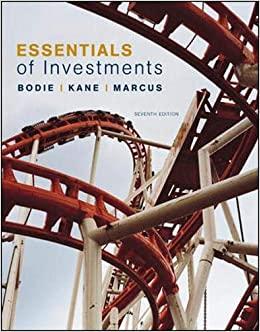Question
Suppose that there are two assets A and B. Their expected returns are E(rA) and E(rB), where E(rA) < E(rB), and the risk free-rate is
Suppose that there are two assets A and B. Their expected returns are E(rA) and E(rB), where E(rA) < E(rB), and the risk free-rate is rf = 0. Their variances, greater than zero, are sd(A)^2and sd(B)^2 and they are the same . Their covariance is zero. In this question assume that shorting assets is not possible. a. (2 points) What is the variance of the portfolio that puts weight w on asset A and 1-w on asset B? Simplify the expression so that sd(B)^2 does not appear. b. (2 points) What is the minimum variance portfolio? c. (1 point) What is the variance of the minimum variance portfolio? d. (2 points) What is the Sharpe ratio of the minimum variance portfolio? e. (2 points) What must be true for the Sharpe ratio of Asset B to be higher than that of the minimum variance portfolio? f. (3 points) Is it possible for the optimal risky portfolio to be the same as the minimum variance portfolio? Very briefly explain the intuition for your answer. g. (3 points) Does your result in part (e) of this question imply that there are no benefits to diversification when two assets are uncorrelated? h. (3 points) Explain the justification for constructing optimal complete portfolios using only the optimal risky portfolio and the risk-free asset.
Step by Step Solution
There are 3 Steps involved in it
Step: 1

Get Instant Access to Expert-Tailored Solutions
See step-by-step solutions with expert insights and AI powered tools for academic success
Step: 2

Step: 3

Ace Your Homework with AI
Get the answers you need in no time with our AI-driven, step-by-step assistance
Get Started


